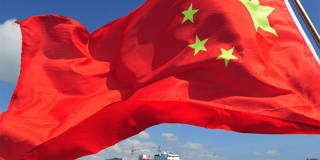The risk of Sino-American conflict has been growing recently, as China reinforces its claim to sovereignty over the Spratly Islands by dredging sand to fill in reefs and build islands. Despite rising tensions and posturing by both sides, properly managed diplomacy can prevent their standoff from escalating.
OXFORD – When a US Navy P8-A surveillance aircraft recently flew near Fiery Cross Reef in the Spratly Islands in the South China Sea, it was warned eight times by the Chinese Navy to leave the area. Chinese Foreign Minister Wang Yi said that, “China’s determination to safeguard its sovereignty and territorial integrity is as firm as a rock.” US Defense Secretary Ashton Carter replied that, “[T]here should be no mistake about this: the United States will fly, sail, and operate wherever international law allows us, as we do all around the world.” So, is a US-China conflict in the South China Sea imminent?

OXFORD – When a US Navy P8-A surveillance aircraft recently flew near Fiery Cross Reef in the Spratly Islands in the South China Sea, it was warned eight times by the Chinese Navy to leave the area. Chinese Foreign Minister Wang Yi said that, “China’s determination to safeguard its sovereignty and territorial integrity is as firm as a rock.” US Defense Secretary Ashton Carter replied that, “[T]here should be no mistake about this: the United States will fly, sail, and operate wherever international law allows us, as we do all around the world.” So, is a US-China conflict in the South China Sea imminent?